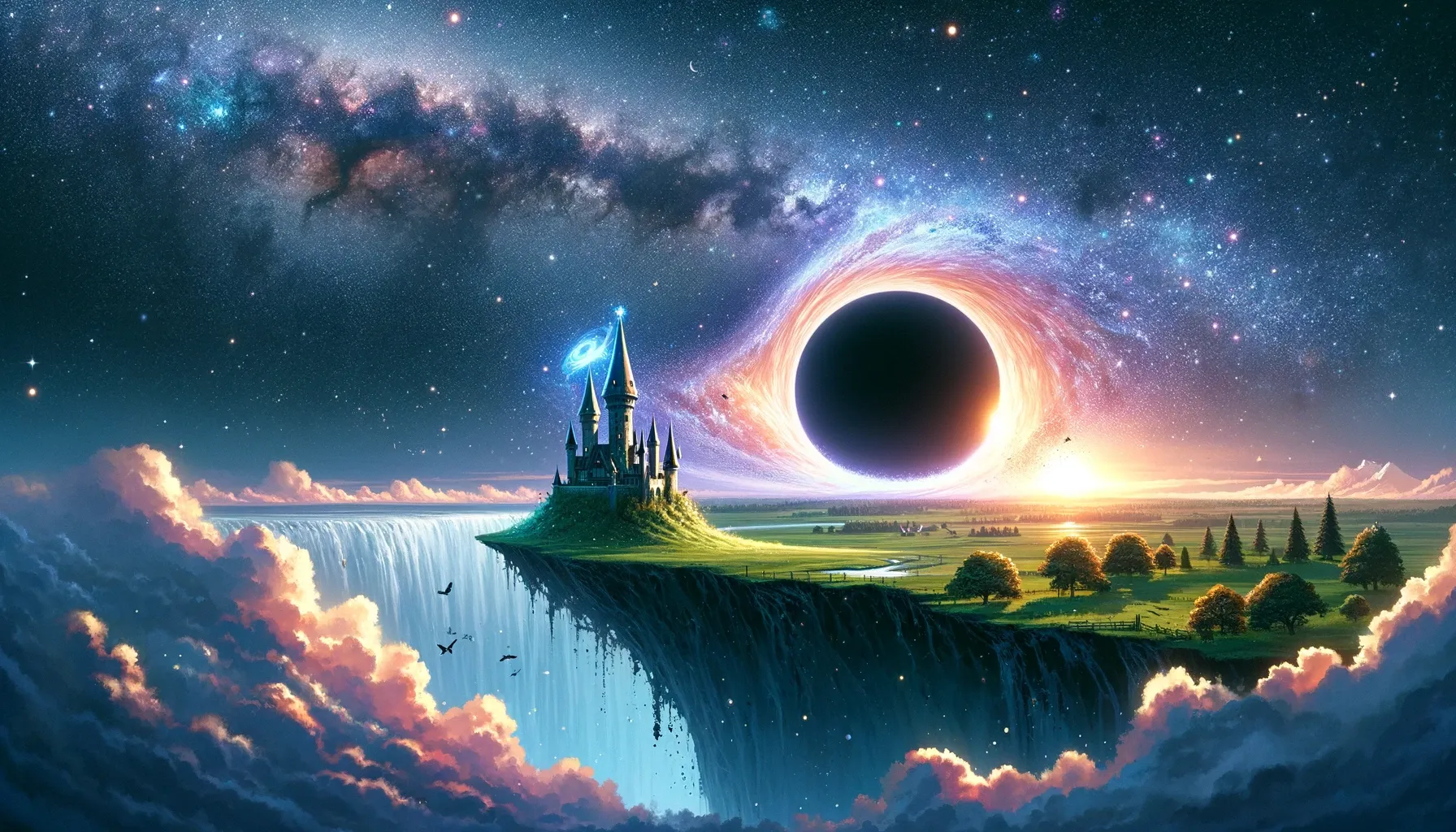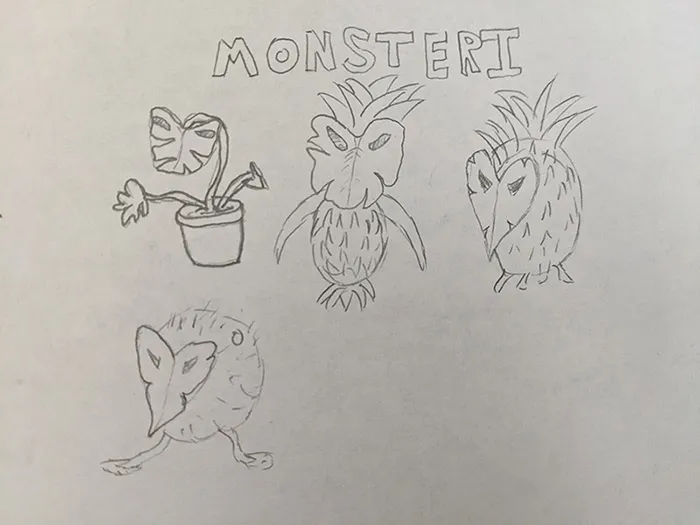The resonance cascade has begun. A great manastorm surrounds Corvia, subsuming land and ley lines alike, tearing the threads of reality apart. Cabals of magi have taken to the skies, so called “Skymagi”, abandoning their loved ones and villages below. The Mages guild has collapsed. Communication lines and peace treaties lay in tatters as everyone scrambles to the eye of the storm.
Some seek shelter or salvation, others vie for power and riches, and a few hopeful prophets search for a savior.
It came faster than divination predicted. Your cabal lifted $castle_name from its earthly tether just as the storm shrouded your home. Tearful goodbyes and hasty promises still ring in the halls as the hum of the mass teleport incantation fades. You find yourselves in eerily calm blue skies with lazy clouds shifting between the battlements.
Welcome to the end times.
I’ve played weekly D&D with a group of friends for ~5 years now. I’ve also had the pleasure of DMing two campaigns. There is a lot I could write about collaborative storytelling and how to DM, but if I had to narrow it down to one factor…
A campaign narrative must be adaptive.
My first campaign, I had planned out an exciting story with deep characters, nuanced actions, and complexity. The players all had fun, but the narrative didn’t have the impact I wanted. With my next campaign, I decided to take the lessons I learned, and the most important one… was not to plan out the narrative. Just plan chapter-by-chapter with some overtones and themes.
It worked much better.
I planned storybeats around player characters, made characters archetypes rather than nuanced (at first), and the depth and complexity grew into the narrative. All moments seemed foreshadowed, but that is just because I used actions in the session to plan the next move.
My players had no idea, and thought this was my best planned campaign yet.
Games seem like a different beast, but they have much more in common than you’d expect. I’ve been playing a game called Wildermyth. Out of sheer support for LibGDX, I tend to purchase most games built with the platform and see what they did with it.
I haven’t been this hooked by a game like this in a long time.
Wildermyth allows you to create a fully customized party and they go on adventures, but they use their paper-dolls aesthetic (and spine2d) to create story moments between different party members. The narratives are closer to a dreamscape (I wonder what GPT-3 could do with this as a mod!), but I found myself creating personalities/narratives out of the series of dreamscapes and building on it.
The game even has a set of systems that reinforce these personalities / story beats:
- Romances/Friendships/Rivalries. These provide in-combat benefits, but also affect stories shown.
- Legacy. Characters that die or win can go into your legacy, show up in future games, and go on additional missions.
- Traits. Simple traits that affect dialogue and stories available.
I highly recommend folks who enjoy tactics and RPGs to check out this beautiful blend. It is full of heart, and the tactical combat has an incredible depth despite seeming outright fairly simple. I’ve been playing exclusively on Walking Lunch difficulty just to really put my party through the ringer.
And it’s fantastic example of how storytelling in roguelikes can evolve.
Skymagi Storytelling

How do people react when the world is ending?
I want to encourage narratives to come out of gameplay. Losing mages, gaining mages, building rapport and deciding how your mages decide to spend their final days.
For example, you come across a small town, there’s a blacksmith and his daughter. The mages are triyng to escape the manastorm, but this village can’t. They don’t have a flying castle. The blacksmith sees the clouds from the east and knows their time is limited.
So the blacksmith asks if you’ll take his daughter onto your flying castle. She’s shown aptitude with magic, and with proper training, might one day learn.
If the players accept, they’ll have a new member join the party, but that member is an apprentice (or maybe even a liability that grows into an apprentice after a certain amount of experience - but has a chance to never).
I have this idea that each run should have the same cast of characters, but playing slightly different roles.
The next run you stumble upon the village, there’s a blacksmith - but no daughter. He mentions that he always wanted a child, but the only person he ever loved left to join an academy of mages.
I love the idea of these cyclical narratives where players’ decisions affect the next cycle, and perhaps that the greater narrative is about breaking out of the cycle entirely.
And using these cycles to explore difficult and interesting topics, provide RPG choice, and let party members respond in different ways, exploring their own personalities and tensions.
World and Regions
I’ve broken Skymagi down into Worlds, Regions, Maps, and Areas.
- World: Term for the entire universe/world-map players castles fly around in
- Region: A distinct set of environmental, cultural, and gameplay differences for players to travel between within a World.
- Map: An in-game navigable space that contains all entities, props, units, etc that players can travel between.
- Area: A tileset that a player can walk upon.
The world will be divided into regions full of nodes, and each node will represent a map that the player can travel to (more on that later).
I brainstormed different regions:
Wildwoods (Fantasy Forest)
A territory with lush large forests interspersed with common fantasy tropes, monsters, occasional castles. Medieval europe. Like Cyrodiil. Rustic charm and quaint surroundings.
- Primary Elements: Nature, Earth, Physical
- Residents: Corvids
Dragon Isles
Volcanic region with volcanos, mountains, and many islands with a mix of rocky and sandy beaches (think Japan / Fire Nation). Serene, tranquil, heavy tropical scenery. Dragons and gryphons are common in this region. Home of a sapient fruit race.
- Primary Elements: Fire, Water
- Residents: Corvids, dragons, gryphons, Plantas
Twilight Reaches
A series of floating islands juxtaposed with giant fluffy cotton candy clouds. This high magic region is full of creatures that have adapted to high altitudes, such as flying whales, and magic users. Most residents are aquatic or flying in nature, but all are sky-worthy.
- Primary Elements: Arcane, Air, Lightning
- Residents: Aquatics (Octopi, Mantas), Skywhales
Embervale (Pyrelands/Harvest Lands/Hallow’s End)
A territory similar to Wildwoods, but heavily pastoral with farms and harvests. Flickers of light float through the area. The fire festival is an on-going activity, an area is heavy with worship of the great pyre. Once the home of the powerful empire and Mages Guild.
- Primary Elements: Fire, Light, Nature
- Residents: Corvids, Spirits
Inside Embervale, I want to have a subregion that is dedicated to the abandoned Mages Guild capital city, which will lead to the end boss.
The Mages Guild will play around with liminality, time, and hint at why the manastorm has come.
Aurora Tundra
The coldest region, though a bleak daylight floods in. Secret ancient technology underpins this area, showing evidence of a race long gone (think breath of wild, star wars, ulduar). Race created the Ley Lines, collapsed, might hint an event called the Great Halting.
- Primary Elements: Ice, Water
- Residents: Penguins, Walrus, Droids (or Golems)
Inside the Manastorm
And then the last question, what happens to regions that have been ravaged by the Manastorm? I should have a specific region that will scare players if they get caught in it, and up the difficulty
Inside the manastorm is a grueling rip-roaring cascade of arcane magic fusing with all things and elements. Prolonged time in the manastorm causes constant castle damage. This region grows to overtake the others over time.
If you get caught too deep, the castle is simply ripped apart immediately.
Species
As hinted at within the regions, I have a few different ideas for denizens of Corvia.
Corvids
As the name suggests, these are humanoids descended from crows/ravens. The general art style of the mages, their faces, and beaks.
Plantas
A species descended from plants. A friend of mine has a beautiful variegated monstera, and I wondered what an entire set of creatures based on that plant could look like.
Here’s some highly embarassing sketches:

Aquatics
I love the idea of flying aquatic creatures in a high magic fantasy setting.
As the player goes higher into the Twilight Reaches, they’ll run into mantas, octopi, and other similar-to-Corvids humanoids based on various animals.
Most of the lore and storybeats I intend to keep a secret, but I’ve spent the past few weeks writing characters, stories, and figuring out how they can integrate mechanically.
I look forward to the day all of y’all can explore Corvia.